Many good things come together in this petite pan.
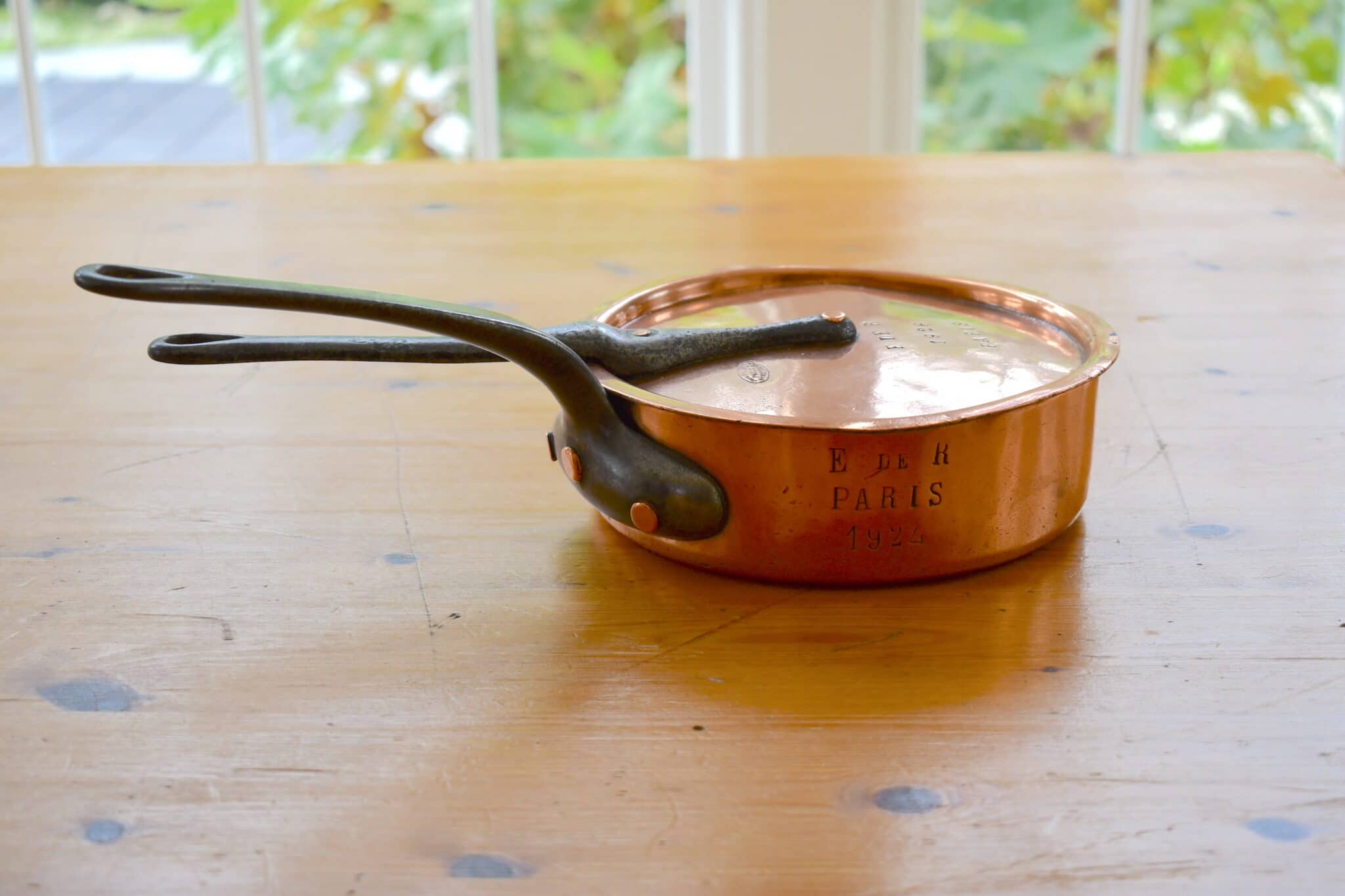
| Type | Tin-lined sauté pan in hammered finish with cast iron handle fastened with three copper rivets and fitted lid with cast iron handle |
| French description | Sauteuse étamée et martelée avec queue en fer munie de trois rivets en cuivre et couvercle à degré avec queue en fer |
| Dimensions | 18cm diameter at rim by 6cm tall (7.1 by 2.4 inches) |
| Thickness | 2.8 to 3mm at rim |
| Weight | 1949g (4.3 lbs) pan body alone; 2616g (5.8 lbs) with lid |
| Stampings | On pan: E de R PARIS 1924, 18; on lid: Jules Gaillard 81 Faubg St Denis Paris, E de R PARIS 1926, 18 |
| Maker and age estimate | Gaillard, 1924 (pan) and 1926 (lid) |
| Source | eBay |
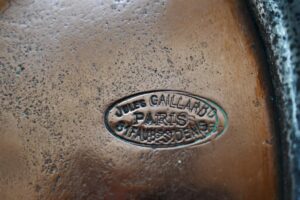 This pan is a standout for me: it’s quite thick for its small size, it is absolutely beautifully made, and its stamps not only establish an interesting provenance but also enable me to identify and date it quite precisely. It’s an added bonus (and a very significant one) that this piece also anchors a specific Jules Gaillard stamp to the 1920s; as I posted recently, I had previously mis-dated this stamp to an earlier period and this pan’s lid provided me the physical evidence I needed to correct myself. I will always feel fortunate to have found this piece and to have added it to my collection.
This pan is a standout for me: it’s quite thick for its small size, it is absolutely beautifully made, and its stamps not only establish an interesting provenance but also enable me to identify and date it quite precisely. It’s an added bonus (and a very significant one) that this piece also anchors a specific Jules Gaillard stamp to the 1920s; as I posted recently, I had previously mis-dated this stamp to an earlier period and this pan’s lid provided me the physical evidence I needed to correct myself. I will always feel fortunate to have found this piece and to have added it to my collection.
This is a sturdy little pan. I measured the rim at 2.7mm but at 1949g (4.3 lbs) it handily outweighs another 18cm modern-era sauté I’ve measured at 3.5mm and 1600g. This is high-quality cookware and it is very well-made.
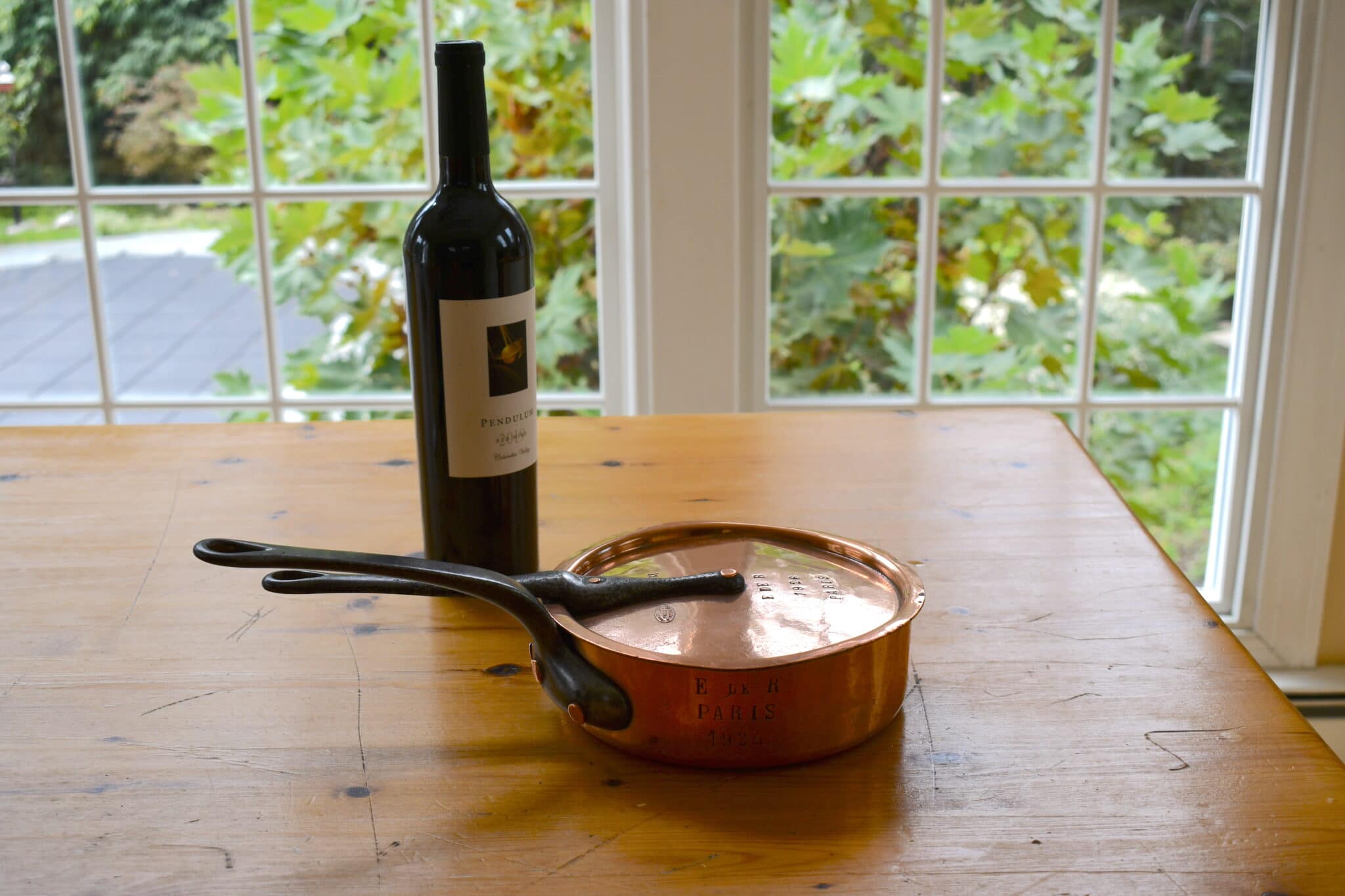
The handle is cast iron and beautifully smooth in texture. I don’t see any filing marks, which suggests that either the post-casting finishing was done so finely as to leave no trace, or the piece was so well cast that it didn’t need any. I see this same beautiful finish on early 20th century Gaillard (which I suspect this piece to be) but I don’t know enough about the composition of iron alloys and the methods of casting to be able to speak with authority as to the causes for its unique appearance.
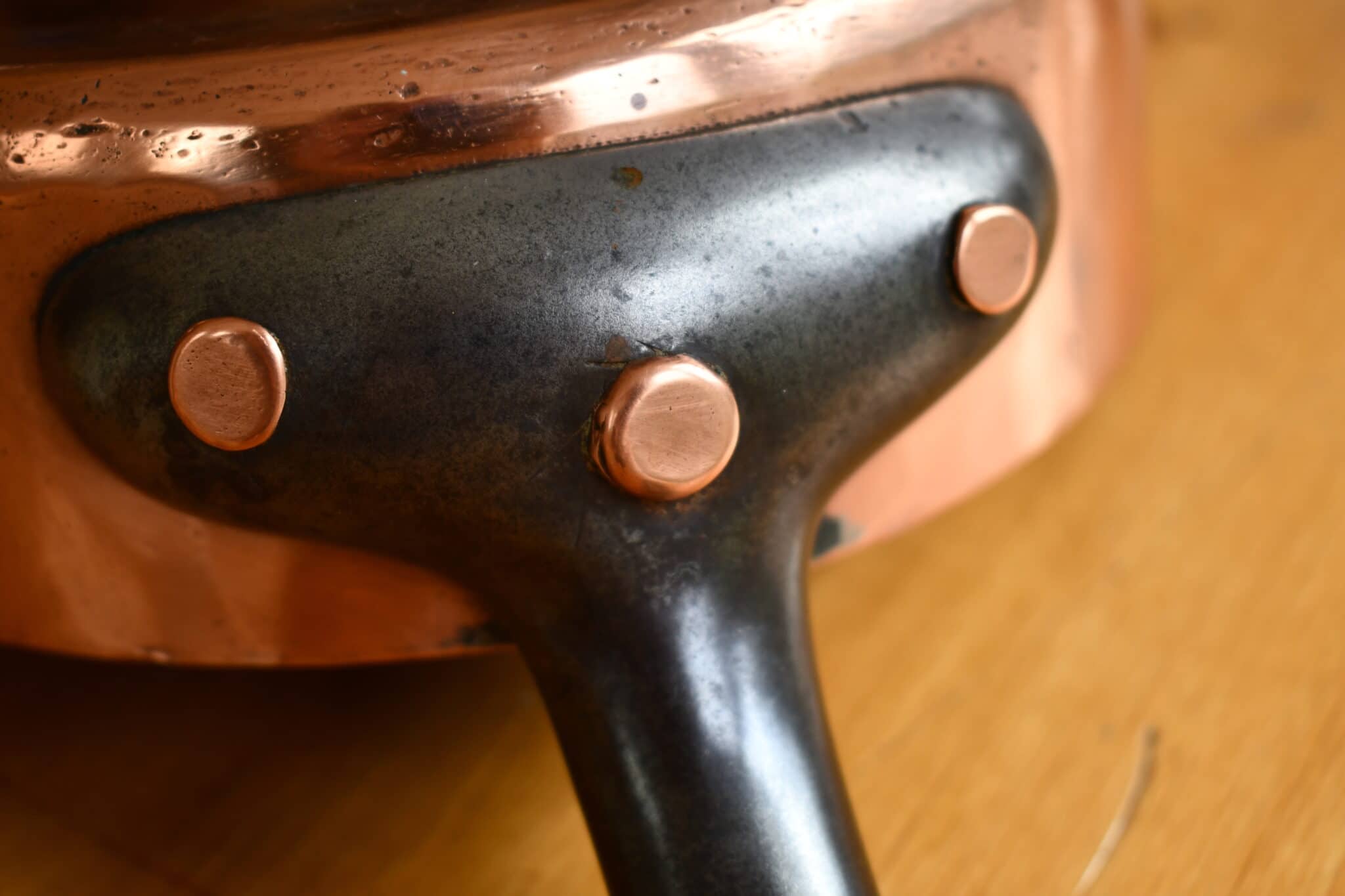
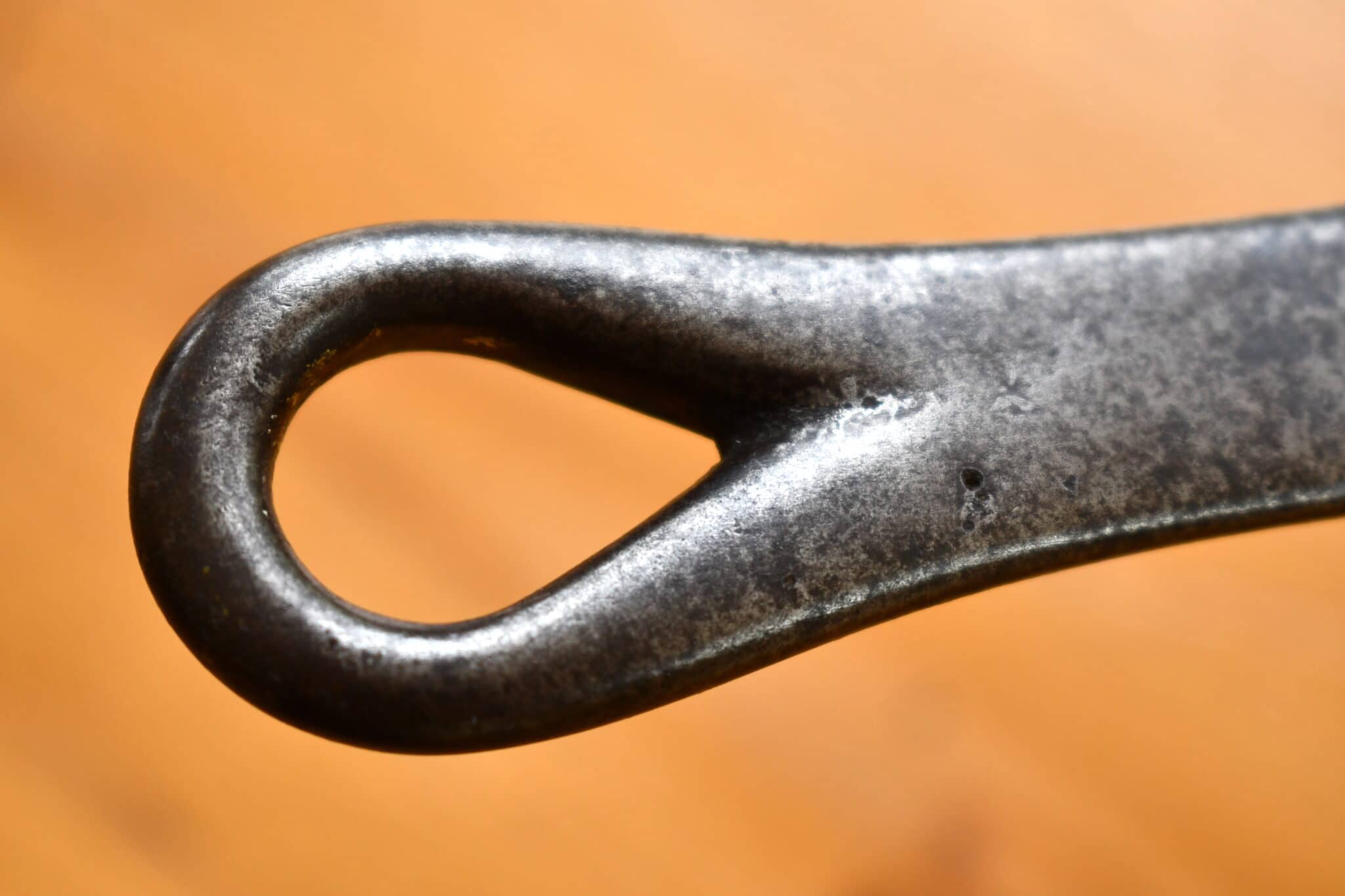
The interior and exterior rivets have been flattened. I detect what I suspect are traces of size numbers on the interior rivets, which I would expect for 20th-century mass-produced rivets.
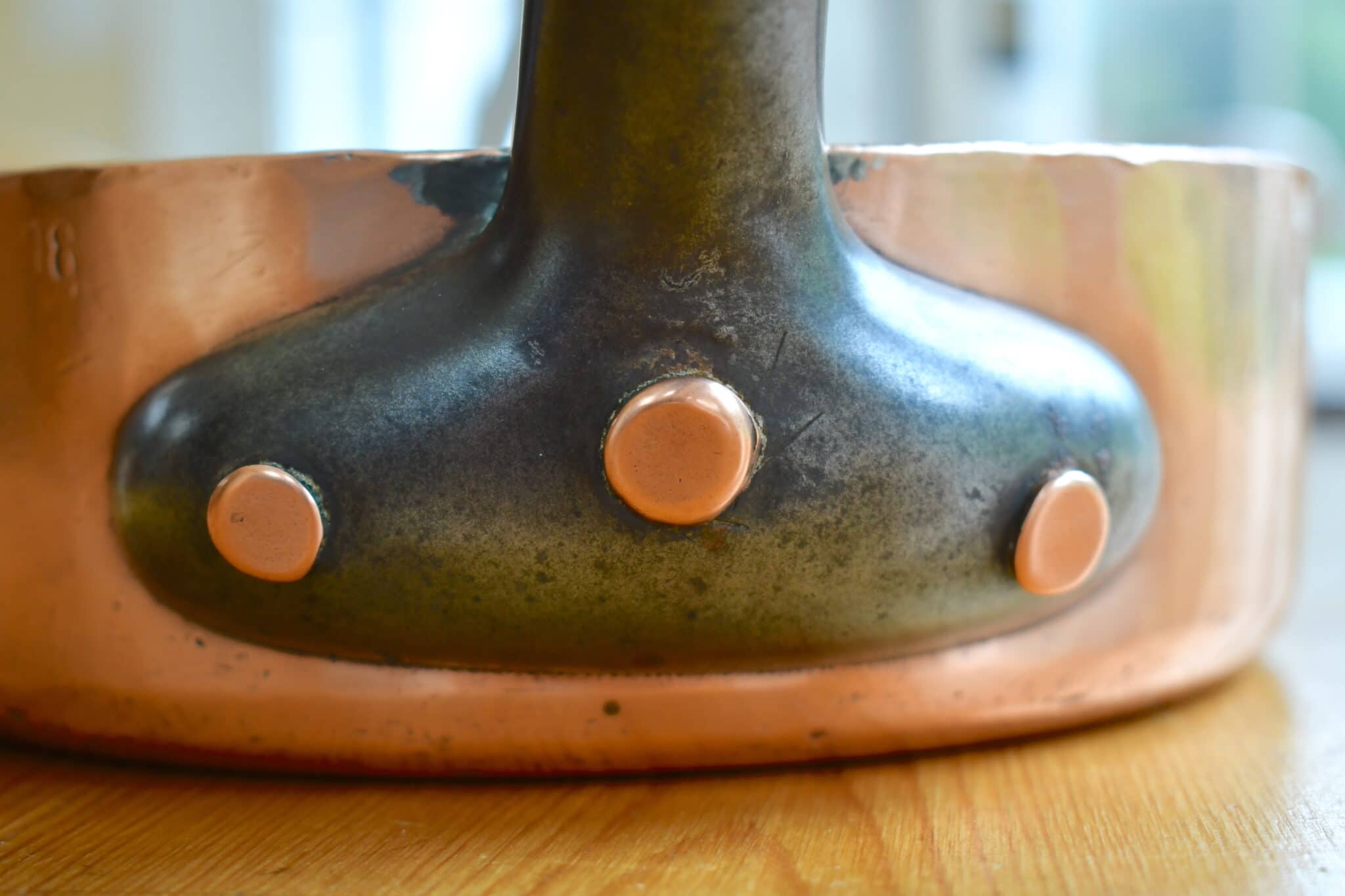
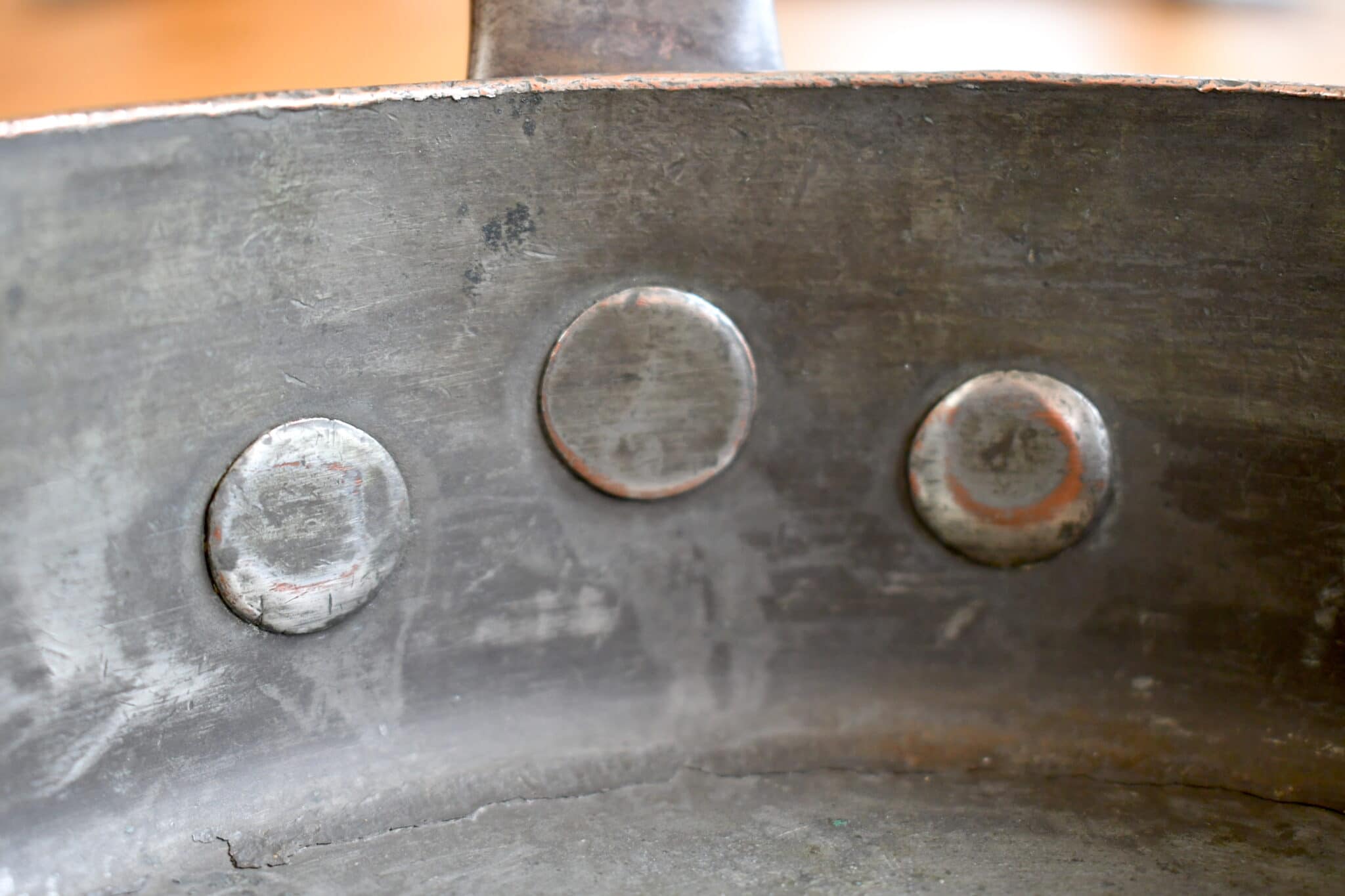
The base is seamless, and for a pan of this thickness, this construction is another indication of 20th century manufacture: it must have been pressed in a machine powerful . I also detect two beveled planes around the edge of the base, a sign of quality craftsmanship. (The pan has been polished quite a bit over its lifespan and the bevels have been softened and so the area under the handle baseplate is where they are most detectible.)
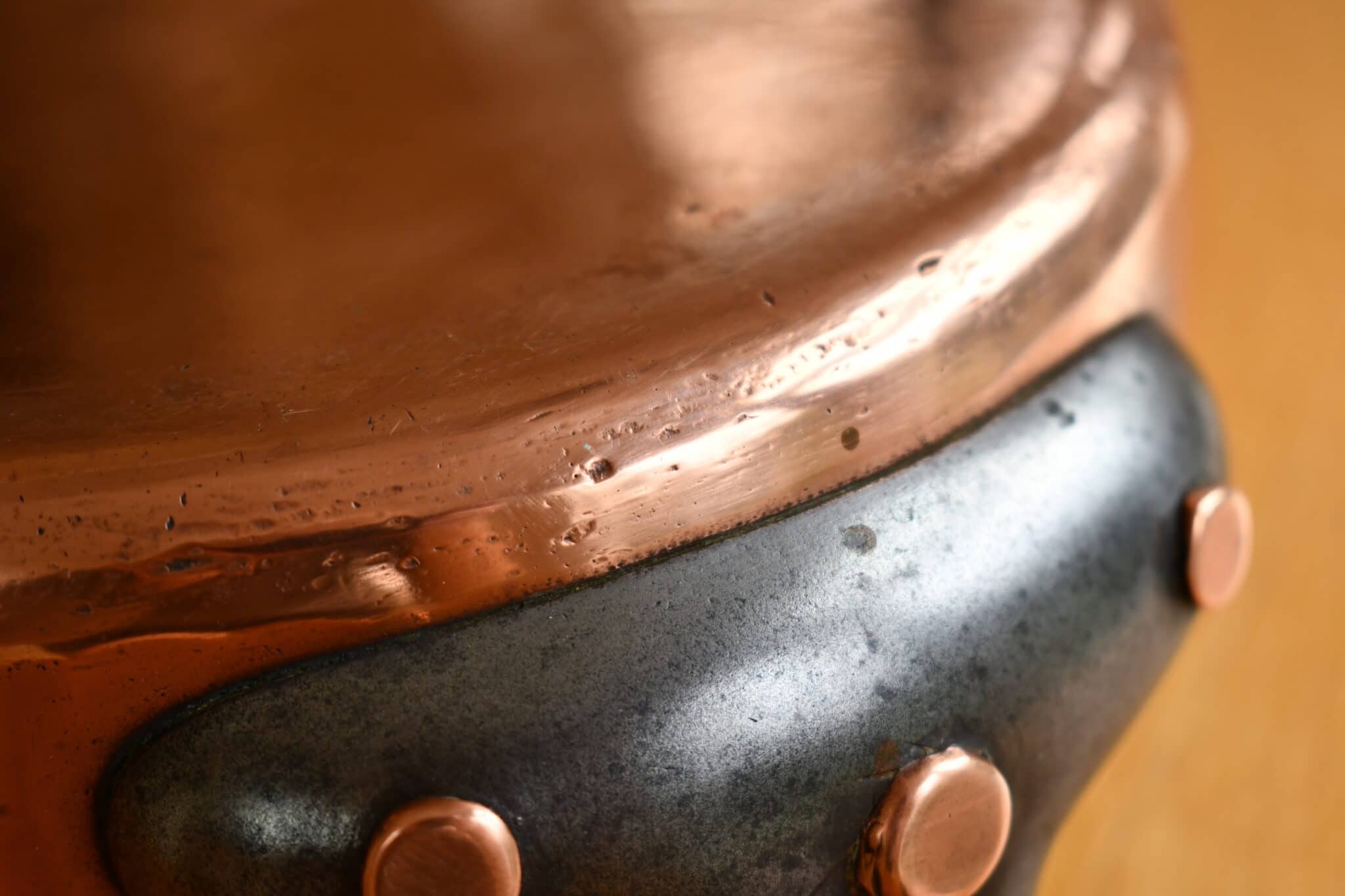
The lid has the same smooth cast handle as the pan. The top-side rivets share the neat flattened appearance as the external rivets on the pan body; the inner rivets are flat and flush to the surface.
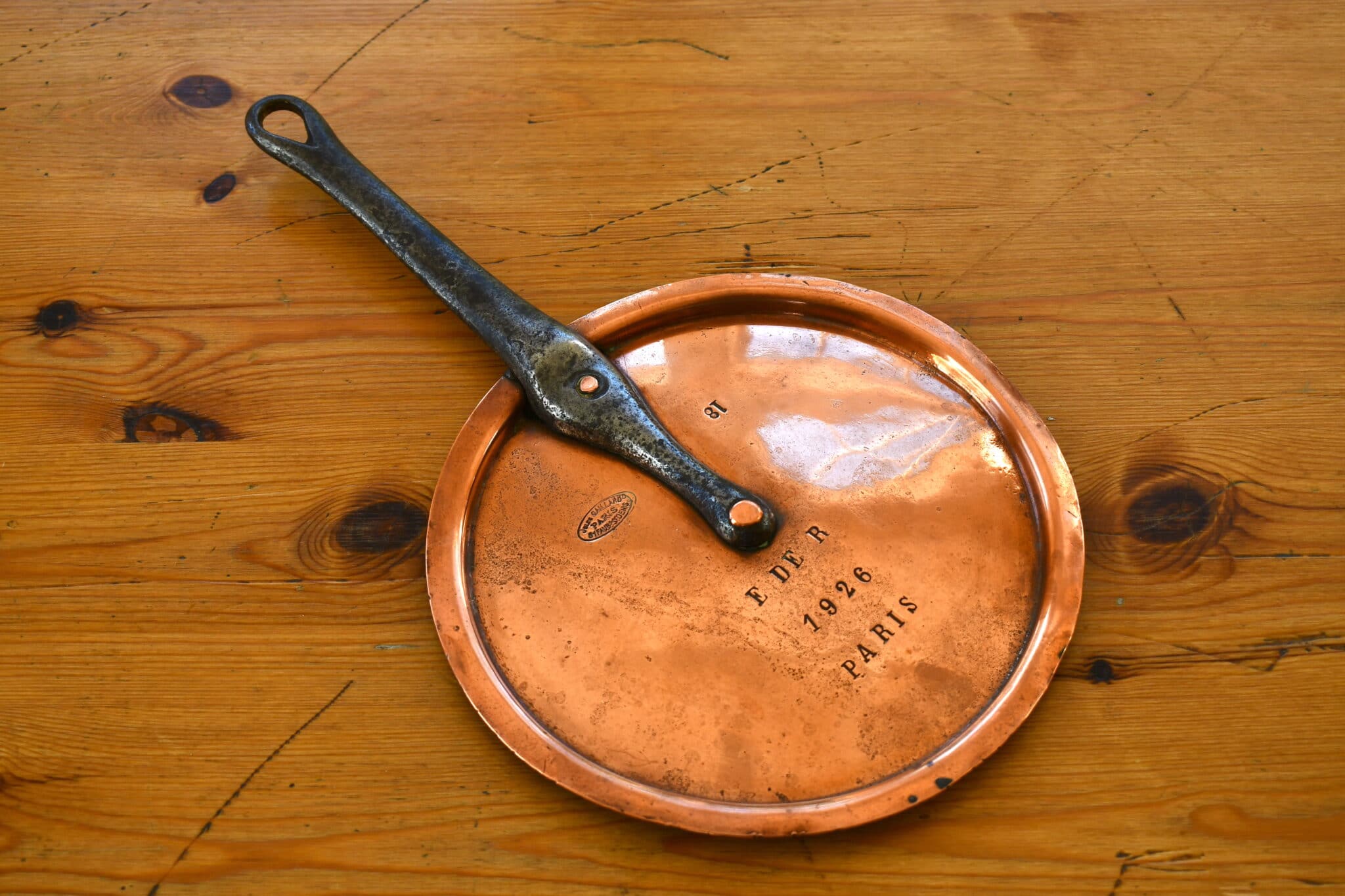

It’s difficult to capture with a camera but the lid is slightly warped. You can spot it somewhat in the photo on the left above, at about 2 o’clock on the rim. It appears that some downward force was applied to the lid and while the spine of the cast handle kept half of the disk flat, the un-stabilized half yielded and formed a very slight crease to the right of the stamps. The photo below is an attempt to capture it again, on the right side towards the far edge. The lid sits reasonably flat on the edge of the pan and is still usable in my opinion.
Now, I’d like to turn to the stamps. Both pan and lid carry an owner’s mark (E de R Paris), a size (18), and a date (1924 or 1926); the lid carries an additional maker’s mark for Jules Gaillard. Based on the physical evidence of the pan’s craftsmanship — thick copper that must have been machine-pressed, mass-produced rivets, cast iron handles, and a high level of hand-finishing — everything about this piece points me to the conclusion that this pan was made by Gaillard for the household of Baron Edmond James de Rothschild (1845-1934), whose principal residence was château Boulogne-Billancourt — also known as château Rothschild — on the outskirts of Paris.
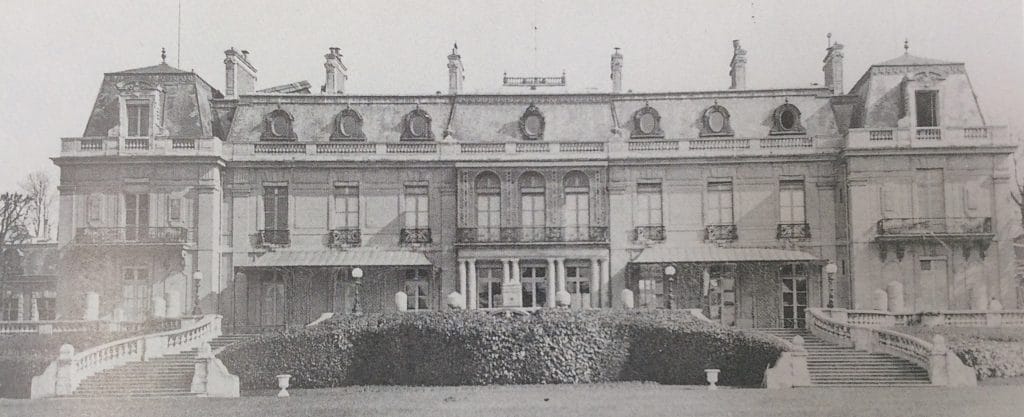
It is this now-derelict château that I suspect was the household for this piece (and others bearing the E de R stamp), and I dearly wish we had period photographs or diagrams of the building in its prime. Edmond lived there until his death in 1934, after which the property was managed for a short time by his daughter Alexandrine until the Rothschild family fled Paris for England in 1939. The abandoned château was devastated by successive waves of wartime occupants — first the Nazis and then the Americans — and it has never recovered. The Rothschild family effectively donated the property to the city of Paris; the building was sold in 1986 to a property investment firm, but at this moment in time the building slips further into decay while it awaits what would be an enormous financial investment for repair and restoration.
The 1924 pan and 1926 lid are clearly not original to each other. Aside from the clearly differing dates, the typeface of the stamps is different — the letters were impressed with physically different stamps.
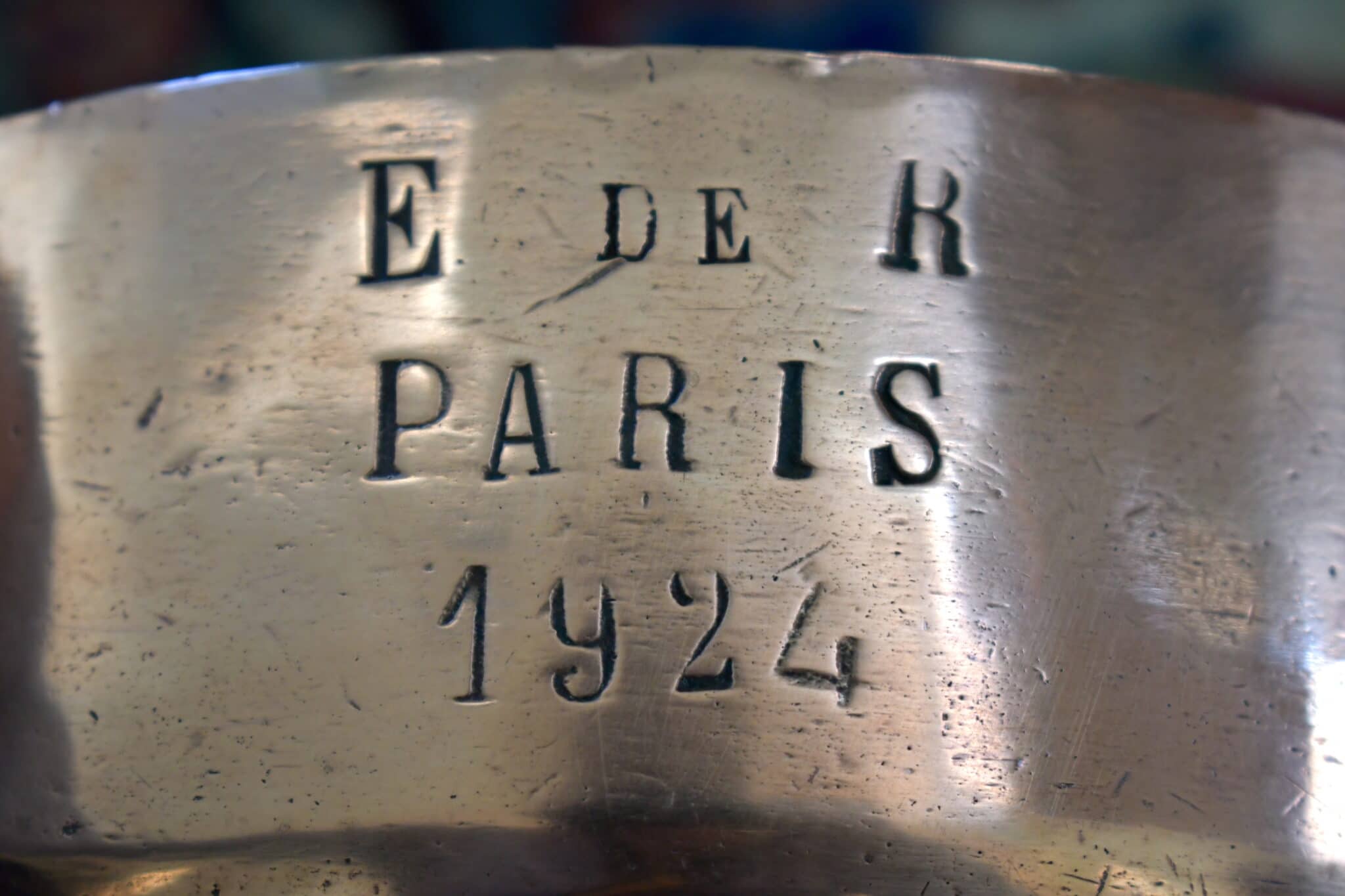
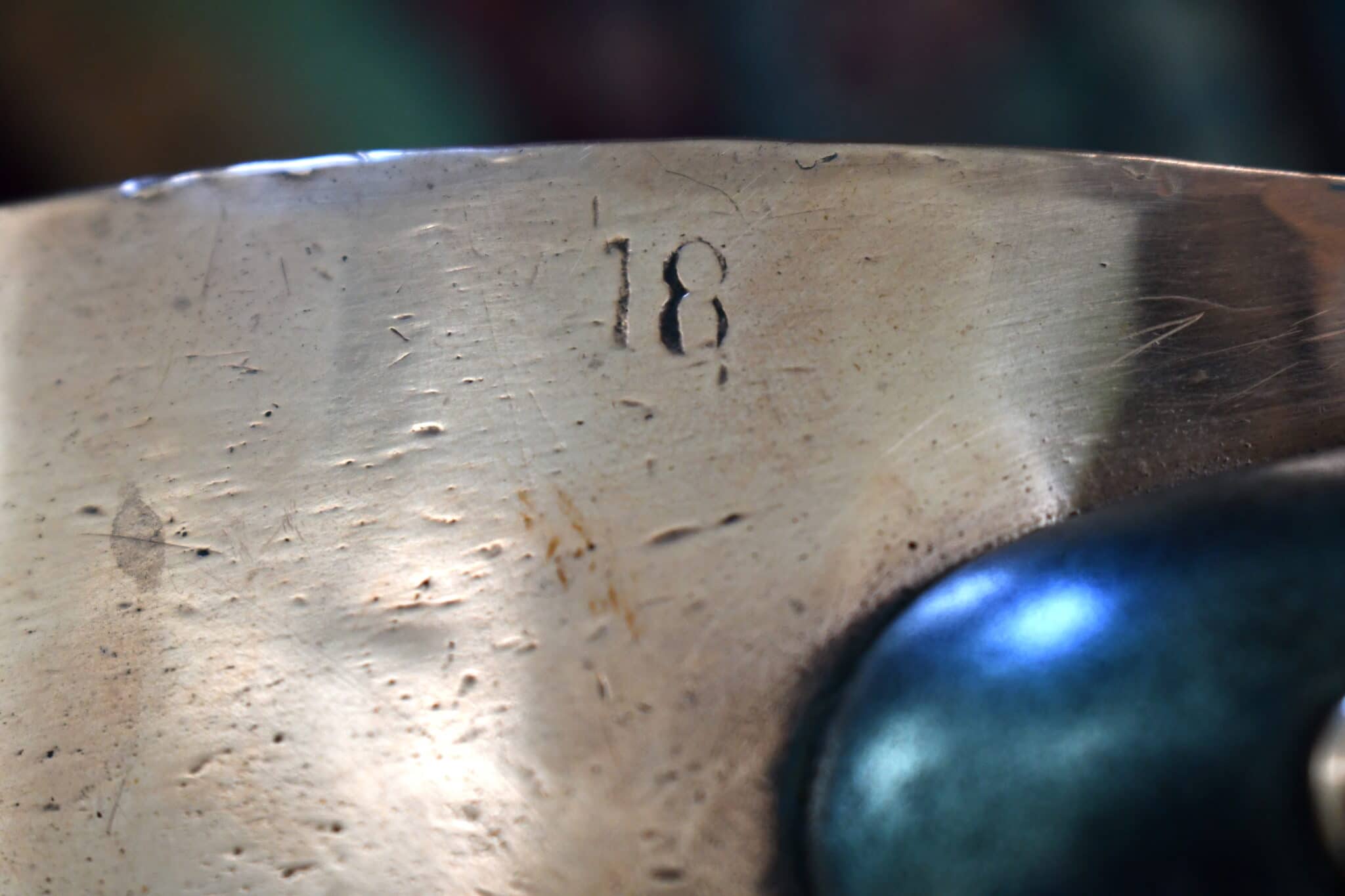
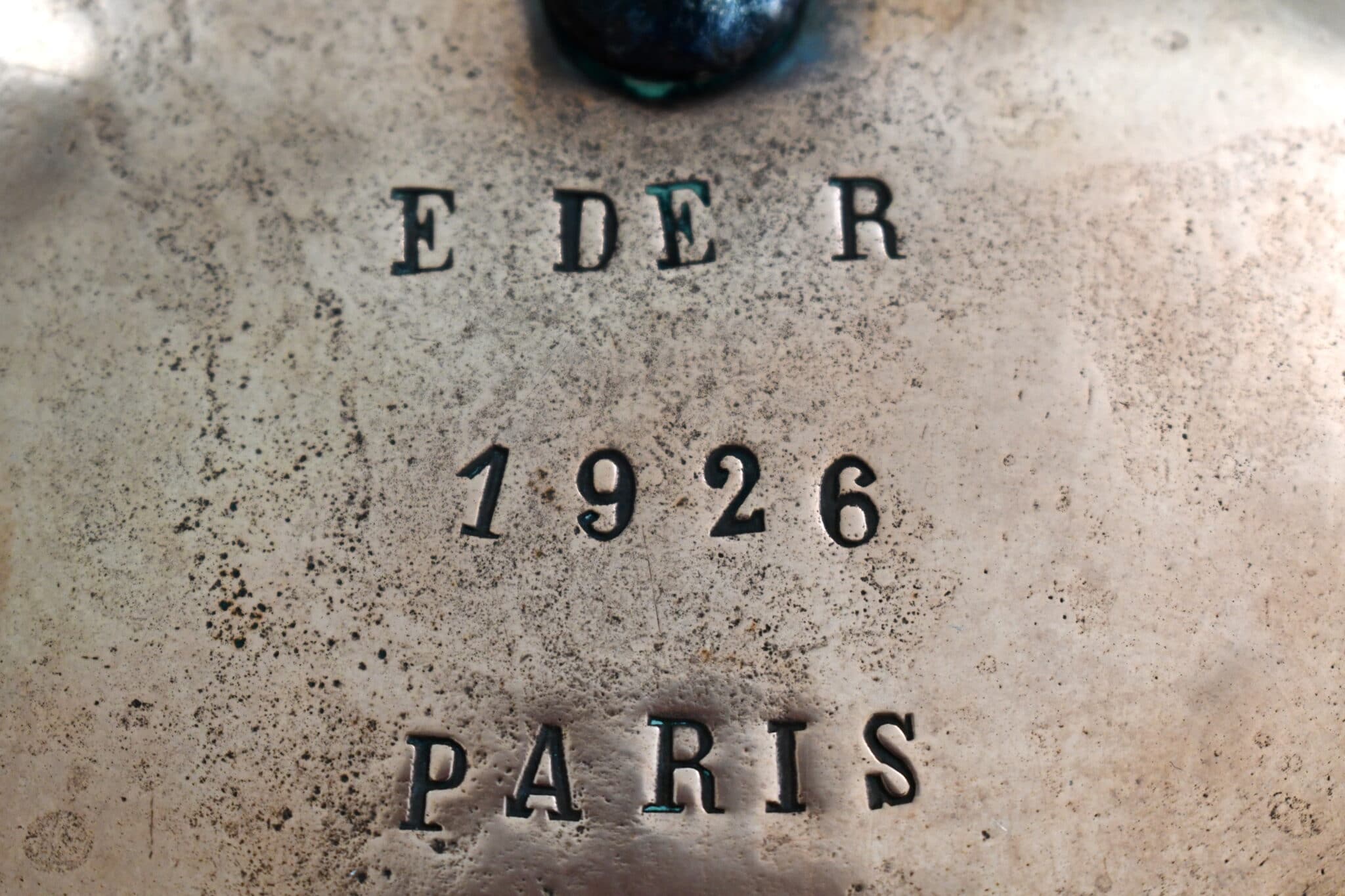
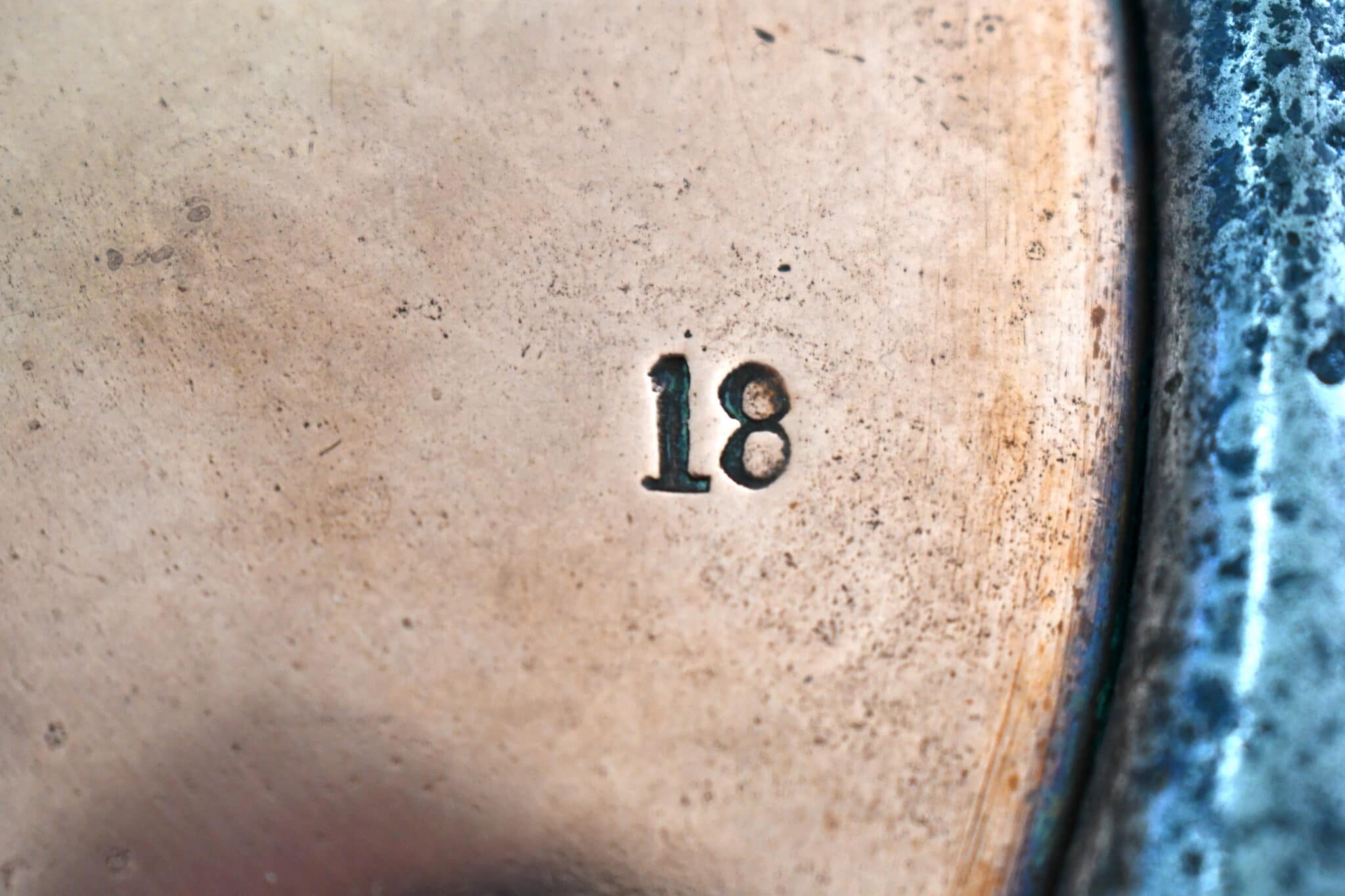
At the moment my assumption is that it was World War II that scattered the copper pans of château Boulogne-Billancourt to the four winds. Edmond de Rothschild’s daughter Alexandrine never lived there after his death in 1934 — in fact, it would seem no Rothschild inhabited the place after Edmond — but I expect she would have kept it intact. The Rothschilds fled France in 1939 ahead of German invasion in 1940; Rothschild property and possessions in France were subsequently seized by the Vichy regime.
It is a miracle that any copper from the kitchen at château Boulogne-Billancourt has survived. I sigh to think of the great pieces that must have been lost. At only 18cm (7.1 inches) diameter, this pan would have been among the most modest members of the batterie de cuisine of a household of such grand scale, but perhaps it was its diminutive size that saved it. How grateful I am to have care of it in the present day.

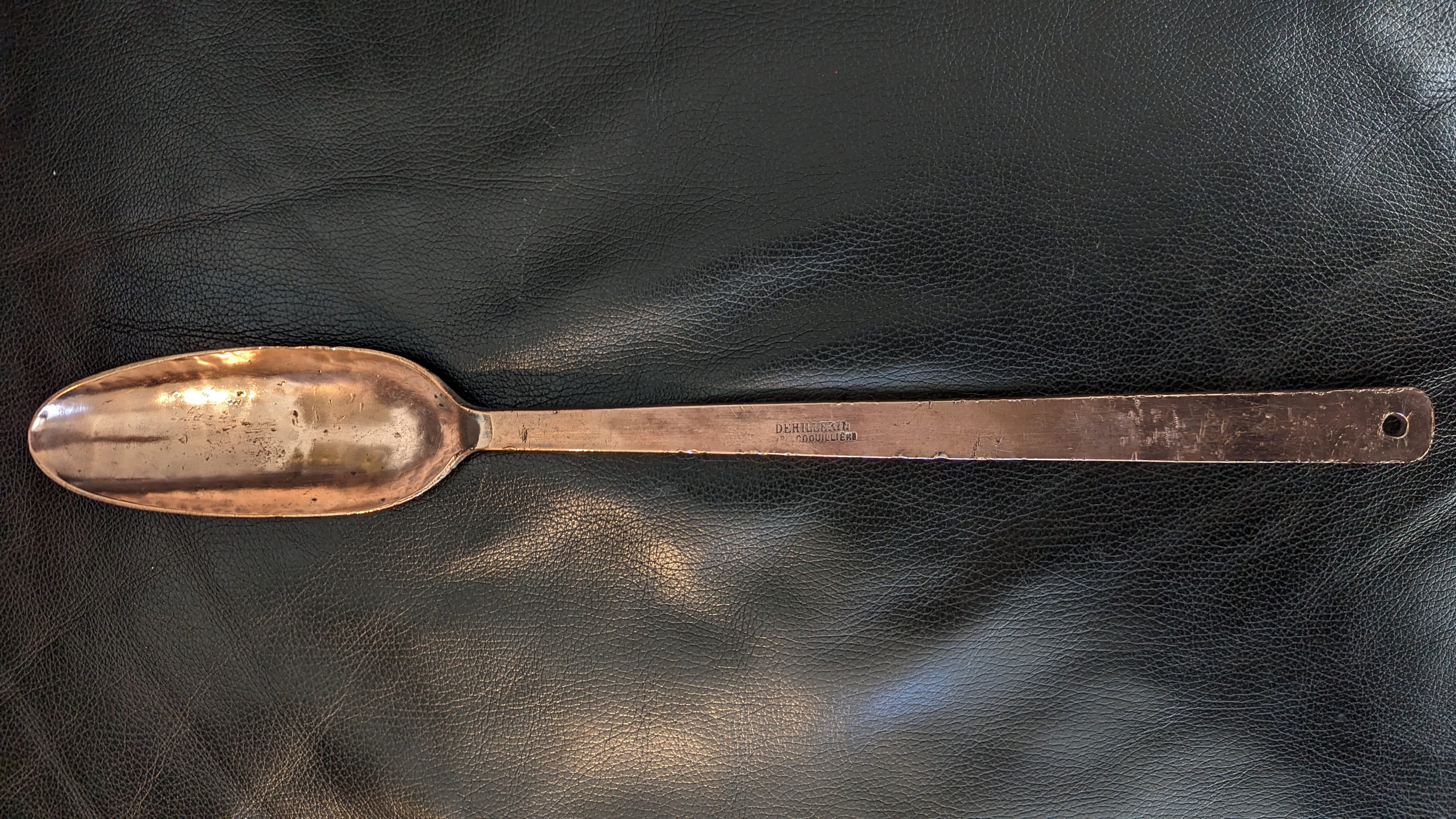

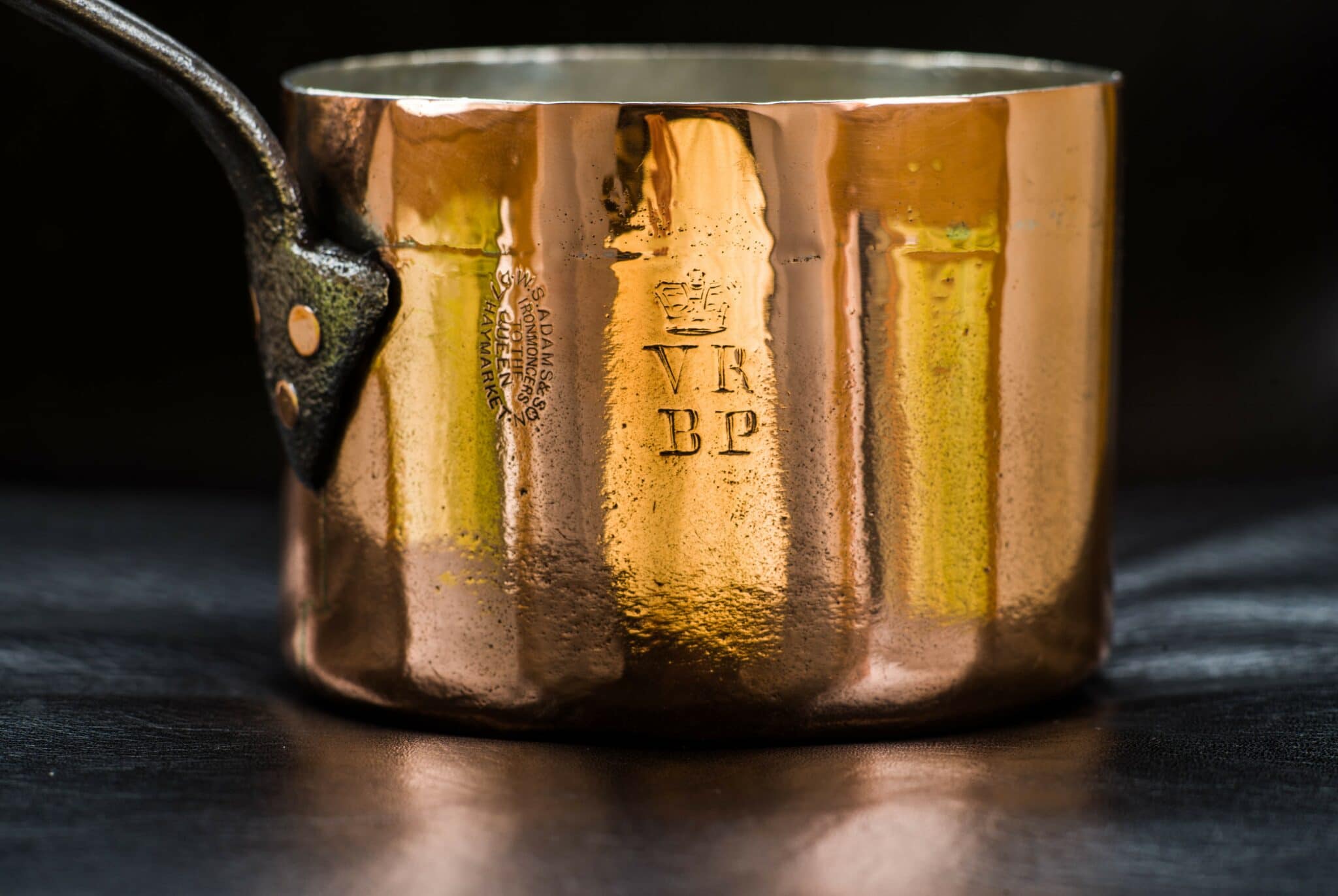

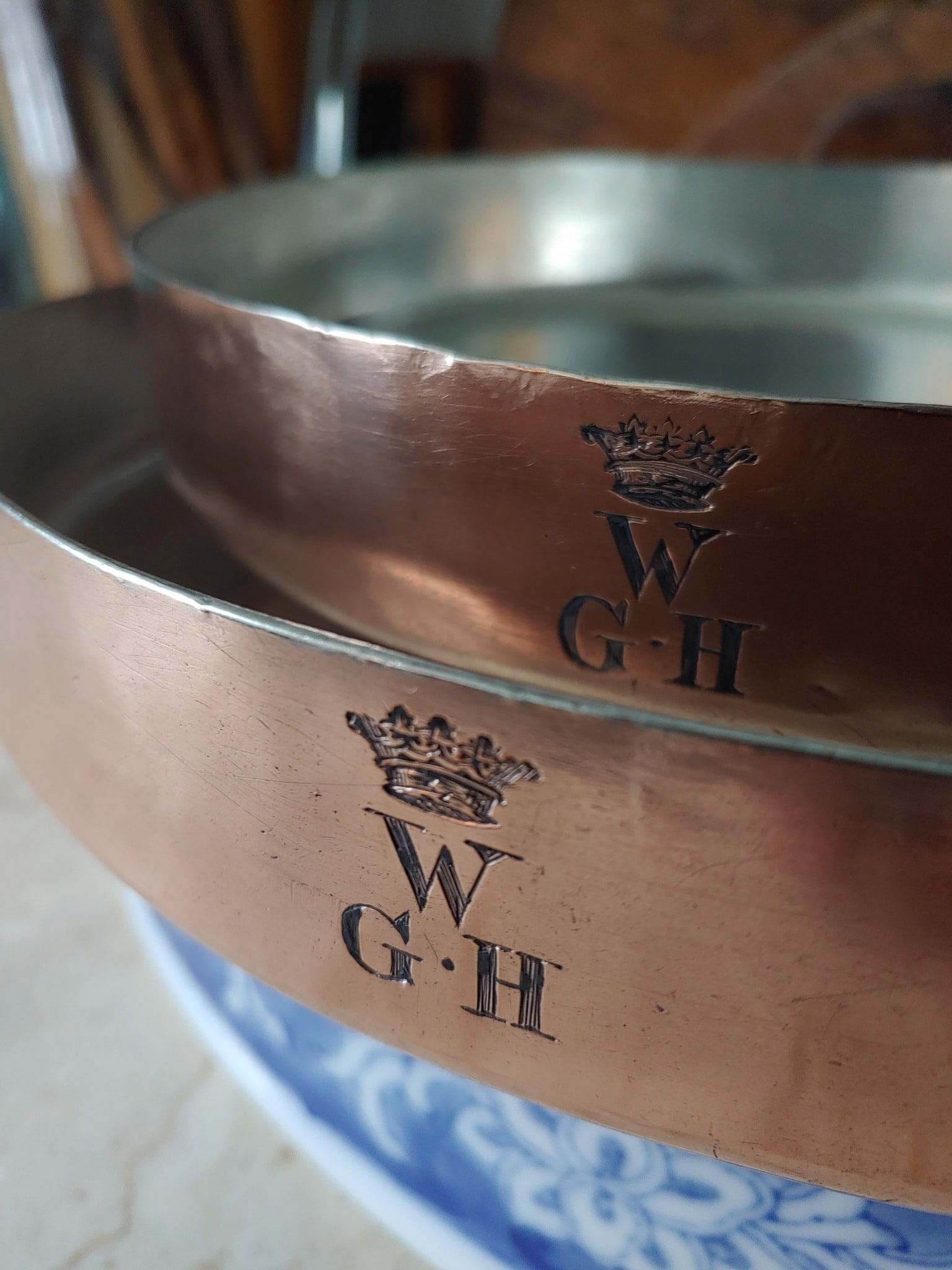
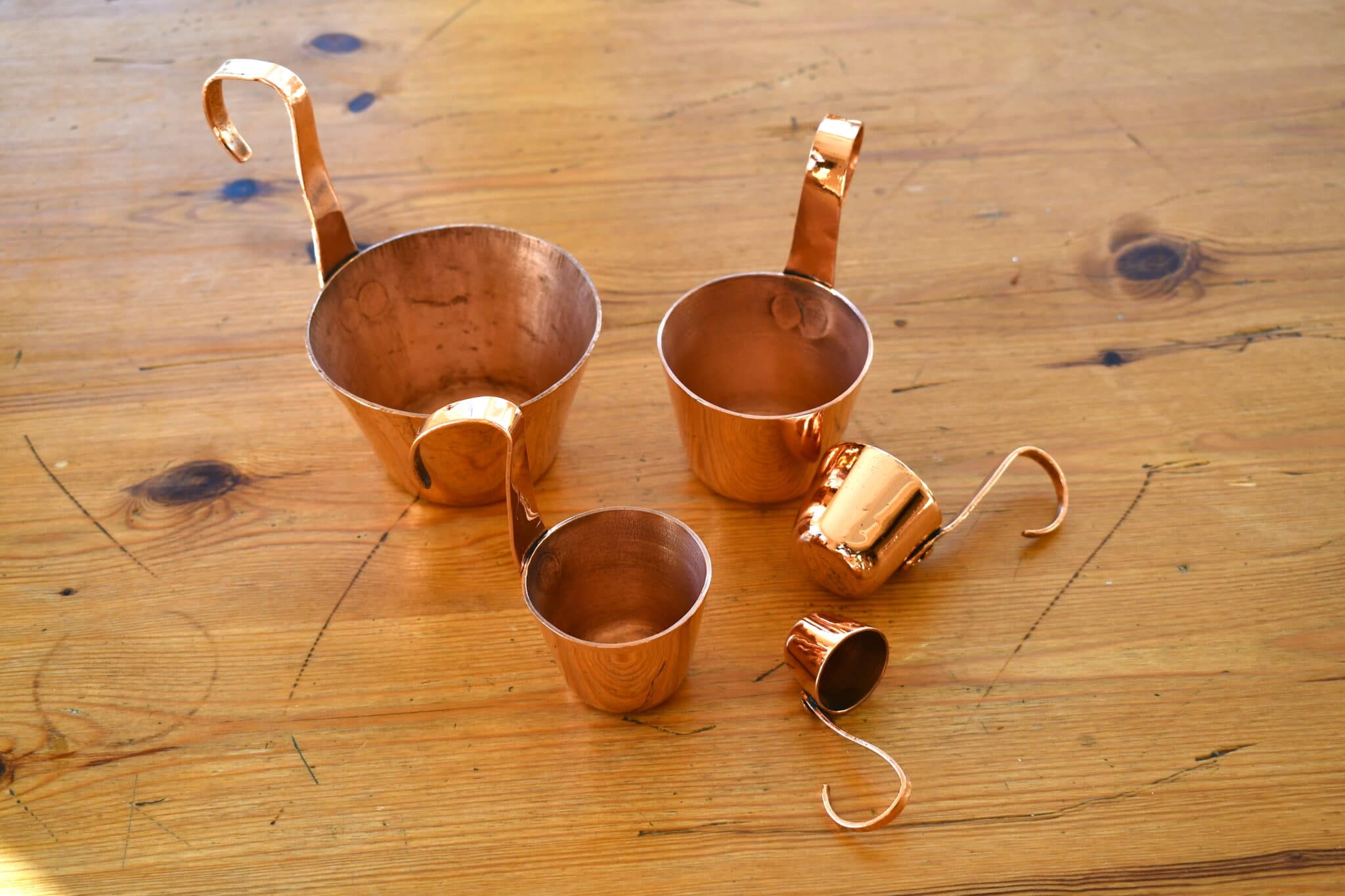
Thanksgiving at VFC.
Another beautiful showpiece for your (and our) collection.
I happened to see a report yesterday about the French government selling off some historic properties. Thoughts of monument protection and the preservation of cultural assets play no role. I fear that this will also happen with the former estate of the Baron de Rothschild. The house would then be “gutted” to accommodate modern apartments.
Very nice sleuthing, and natural history.
Thanks Phil — I’m glad you like the post!
VFC, another real nice historic example of culinary art. Hopefully there is a substantial collection of these Rothschild pans in the hands of French collectors.
Stephen, I would hope so. I’m considering reaching out to the Rothschild Foundation to inquire as to whether they retain a collection of pieces.
Thank you, Martin!
Hoping to find photos of the original condition of the castle between 1900 and 1935, I initially only came across photos documenting the terrible devastation of the building. For decades, obviously nothing was done for its preservation. The castle and park changed hands several times. A Saudi, the Dior Foundation and the Chinese Embassy showed interest. In 2016, an investment company was awarded the contract for the renovation with the aim of creating a (private) residence with 1,500 m² of living space, whose exterior closely follows the historical model. The designs for this are impressive. But so far I found no evidence that this project was actually realized.
Attached is a video of the project with short historical scenes.
https://www.youtube.com/watch?v=QTyR5cKJ6LM
If anyone is more interested in the history of the Rothschild family and would also like to see some more of their castles:
https://familypedia.fandom.com/wiki/Rothschild_family
I recently purchased what I assume is a stockpot. It’s 50cm diameter by 50cm tall, dark brown and pocked with verdigris, and with a pair of quite beautiful forged but very heavily rusted swinging handles, each secured to two plates with three rivets a piece. It weighs 25kg. My partner picked it out at a local brocante shop as she though it would make a nice feature in the garden, maybe drill a hole or two in to it and turn it into a water feature. After scouring the sides, I eventually found what I assumed was the owners mark…
J DE R
PARIS
It suspect that paris wasn’t the original home of the pan however, as the original stamp appears to be
J DE R
I
The P A R and S were added after, flanking the I of the original stamp.
In your research into the family, would you have come across anything that the I might signify?
What a find that just escaped “misuse”!
A very hypothetical attempt at interpretation: If one assumes that the “I” as in the other mentioned stamp (“Paris”) should indicate a place, I have not come across a suitable place. The number of castles, palaces and villas of the family dynasty Rothschild, distributed over Europe, is hardly to be grasped. But the “I” could also be read as a (Latin) number.
To “P A R” I found the association “Palais Albert Rothschild”, Vienna. In 1947, its then owner Louis Nathaniel von Rothschild decided to give the building, restituted to him after WWII, to the Republic of Austria with the condition of a pension fund for his former employees. However, the federal government had no use for the valuable Ringstraße-era object and began demolition work in 1954. Unfortunately, however, I can find no explanation of the additional letter “S”.
To complicate matters further, there are several Rothschild (women and men) whose first names begin with “A”. But I did not find another suitable combination with a palace.
I am curious about other interpretations.
Hi Martin, I’ve uploaded some pictures here for you to look at…
https://imgur.com/a/KP23peU
Pretty sure the later stamping is intended to be read as Paris. The earlier stamping of the I alone remains a mystery.
Alex, thanks for the complementary photos. Now I gained a completely different impression of the letters PAR and I described by you. My speculations should be finally forgotten or even better deleted. Pictures say more than many words. It is true that you can read PARIS very well now, but it is still followed with some distance by an O (or is it the number 0?). However, the distances also vary between the other letters. Strange. No idea what this letter or number is supposed to indicate. Since the typeface of the pans published by VFC also differs, I’m not surprised to see another variation on your stockpot. I notice that “DE” was stamped very small in relation to the letters J and R. The letter J looks a bit alienated to me, but shows some similarities to the J on a turbotiere that VFC showed in the post “A family resemblance”. Overall, the typeface on the stockpot seems a bit more bumpy, especially when compared to the particularly nice “Edmond James de Rothschild” stamp with a Baron crown. Unfortunately, your stockpot does not seem to have a maker’s mark. Such another stamp would have provided additional security, especially since the swing handles and their attachment with surprisingly small rivets and somewhat thin support plates are unusual.
I = inherited
S = Successor
Approximately so: originally owned by Baron James de Rothschild, then inherited by the successor, now in the Palais Albert Rothschild.
Well, wild imagination.
When you wrestle with 4 languages (German, English, French, Latin), nonsense easily comes out.
S could stand in French for successor (“sucesseur, suivant”), but with the inheritance (“I”) this does not work (“héritage”). Sorry.
Alex, thanks for the complementary photos. Now I gained a completely different impression of the letters PAR and I described by you. My speculations should be finally forgotten or even better deleted. Pictures say more than many words. It is true that you can read PARIS very well now, but it is still followed with some distance by an O (or is it the number 0?). However, the distances also vary between the other letters. Strange. No idea what this letter or number is supposed to indicate. Since the typeface of the pans published by VFC also differs, I’m not surprised to see another variation on your stockpot. I notice that “DE” was stamped very small in relation to the letters J and R. The letter J looks a bit alienated to me, but shows some similarities to the J on a turbotiere that VFC showed in the post “A family resemblance”. Overall, the typeface on the stockpot seems a bit more bumpy, especially when compared to the particularly nice “Edmond James de Rothschild” stamp with a Baron crown. Unfortunately, your stockpot does not seem to have a maker’s mark. Such another stamp would have provided additional security, especially since the swing handles and their attachment with surprisingly small rivets and somewhat thin support plates are unusual.
Hi Martin, regarding the bumpy appearance of the J, it does look like sometime later, someone tried to flatten or otherwise obfuscate the J by means of either a pointed hammer or more likely a punch. Whether the intention here was to try and erase the J to apply a new stamp as it pasts from father to son, or perhaps to try and delete the owners mark entirely I don’t know. Perhaps the latter would indicate an attempt to conceal the owners mark. Perhaps it was looted from Chateau Rothschild after it was abandoned and the new « owner » didn’t fancy getting caught out. Who knows.
Looking very closely at the picture though, it appears that these punch marks if we can call them that we’re applied after the original J de R stamp but before the addition of PARIS. It seems to me that the small indent immediately to the left of the I has deformed the edge of that stamping, suggesting it happened after. However, if you look at the R and S of PARIS, in both cases, there appears to be a punch mark there prior to being stamped. The R and S are both crisp over those indents.
The lack of makers mark is unfortunate, but I will go over it again to see what I can find.